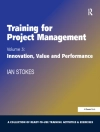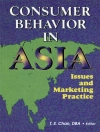This is the first book to fully adapt the principles of agility for government leaders who want to make their organizations more effective and nimble while better serving their public mission.
This practical resource will equip government leaders at all levels with evidence-based, hands-on guidance for transforming their organizations, enabling them to better serve the public and their customers. While many books focus on organizational agility for leaders of for-profit companies, this is the first one tailored to the unique requirements government leaders face. They must find a way to accomplish their mission while navigating constant change.
Government leaders at all levels must maneuver their organizations through new, often complex challenges, ranging from new laws that impact their agencies, new technologies, changes in leadership, and unexpected events. By explaining how to manage and organize work differently, this guide will help leaders weather the storm of that constant change so they can help their agencies realize their missions and serve the public interest.
قائمة المحتويات
Contents
Preface
Chapter 1: Constant Change Requires a Different Way of Organizing
13
Make Sensing and Interpreting Routine Behaviors
20
Tool: Identify Factors that Influence Your Organization
21
Tool: Analyze Your Environment
25
Make Responding a Routine Behavior
26
Understand the Seven Levers
29
Myth: We Just Need To Be More Effective
31
Myth: We Need Either Stability or Flexibility, Not Both
32
Chapter 2: Build a Foundation of Psychological Safety
36
Understand Why We Need to Feel Safe
39
Tool: Is There Enough Psychological Safety?
41
Use the Platinum Rule
44
Give Yourself and Your Team Permission To Be Curious
46
Reward Behaviors, not Just Results
48
Myth: Telling People to Feel Safe Will Enhance Their Psychological Safety
52
Tool: Actions to Increase Psychological Safety
53
Chapter 3: Lead with Agility
58
Explicitly Call for Agility Norms
62
Help Others Understand the Mission
64
Empower Others
65
Lend Support to—and Participate in—the Routines
66
Tool: Support Behavior Change in Others
67
Tool: Agile Leadership Behaviors Self-Assessment
68
Myth: As a Leader, I Have to Have All of the Answers
73
Myth: If I Delegate, Then There Won’t be a Role for Me
75
Chapter 4: Make Decisions at the Right Level
78
Enable Decisions at the Lowest Level Possible
79
Tool: Who Should Make a Decision?
80
Make an Informed Decision
82
Widely Share Decisions
83
Tool: Decision Log
85
Don’t Debate, Test it Out
86
Flatten the Structure and Respond with Teams
87
Myth: As a Leader, I Won’t Know What’s Going on if I Delegate Decisions
88
Chapter 5: Promote Collaborative Learning
92
Set Norms for Information Sharing and Interpreting
96
Tool: What are Your Organization’s Information Sharing Norms?
102
Turn Meetings into Meaningful Discussions
103
Create Knowledge Networks
107
Tool: Map Your Knowledge Network
111
Curate Knowledge
112
Myth: Technology will Solve our Knowledge Problems
114
Myth: I Won’t Have Any Job Security If I Start Sharing Information
115
Chapter 6: Create Stability
120
Maintain a Stable Organizational Structure
121
Tool: When To Restructure the Entire Organization
125
Identify Well-defined Processes
126
Tool: Where Do You Need Stable Processes?
130
Tool: Process Improvement Canvas
132
Staff Stable Processes with Stable Roles
132
Provide Stable Norms and Expectations
134
Myth: We Can Respond to Frequent Changes by Restructuring
136
Chapter 7 – Create Flexibility
139
Respond with Teams
140
Incorporate Innovation Techniques to Solve Problems
142
Conduct Rapid Experiments and Pilots
144
Tool: Map Your Assumptions
146
Identify Flexible Processes
148
Staff Flexible Processes with Flexible Roles
149
Myth: We Have To Be a Well-functioning Organization Before We Can Be Flexible
151
Myth: Developing Innovative Ideas is a Mysterious Process
152
Chapter 8 – Encourage the Routines
158
Get Everyone Involved in the Routines
159
Tool: Where Can We be More Proactive?
159
Tool: Coordinate and Define Your Sensing Activities
162
Tool: Sensing and Interpreting Checklists
164
Engage in Reactive and Proactive Sensing
169
Build in Time for Interpretation
170
Engage in Reactive and Proactive Responding
170
Myth: Proactive Actions Might Not Pay Off
172
Myth: Experimenting and Piloting Might Not Pay Off
174
Chapter 9: Invest in People
179
Invest in Continual Employee Development
180
Promote a Learning Orientation
184
Tool: Document (and Celebrate) Learning
187
Proactively Identify Future Skills
187
Provide Time for Employees to Recharge and Refresh
189
Myth: We Don’t Have the Time or Money to Develop Employees
191
Chapter 10 – Putting It All Together
195
Be Persistent and Consistent
196
Cycle Back Through the Chapters
197
Expand Your Application
197
Appendix: Organizational Agility Framework
200
The Environment
201
The Organization: Agility Routines and Levers
202
Outcomes
207
The Government Organizational Agility Assessment
208
Author and Contributor Bios
211
References
214
عن المؤلف
Shelley A. Kirkpatrick, Ph D, is a principal at the MITRE Corporation. She is also an adjunct professor of human resource management at George Mason University and a former professor at Carnegie Mellon University and the American University. As founder of Visiontelligence LLC, she applies her research to help entrepreneurs grow their business.












